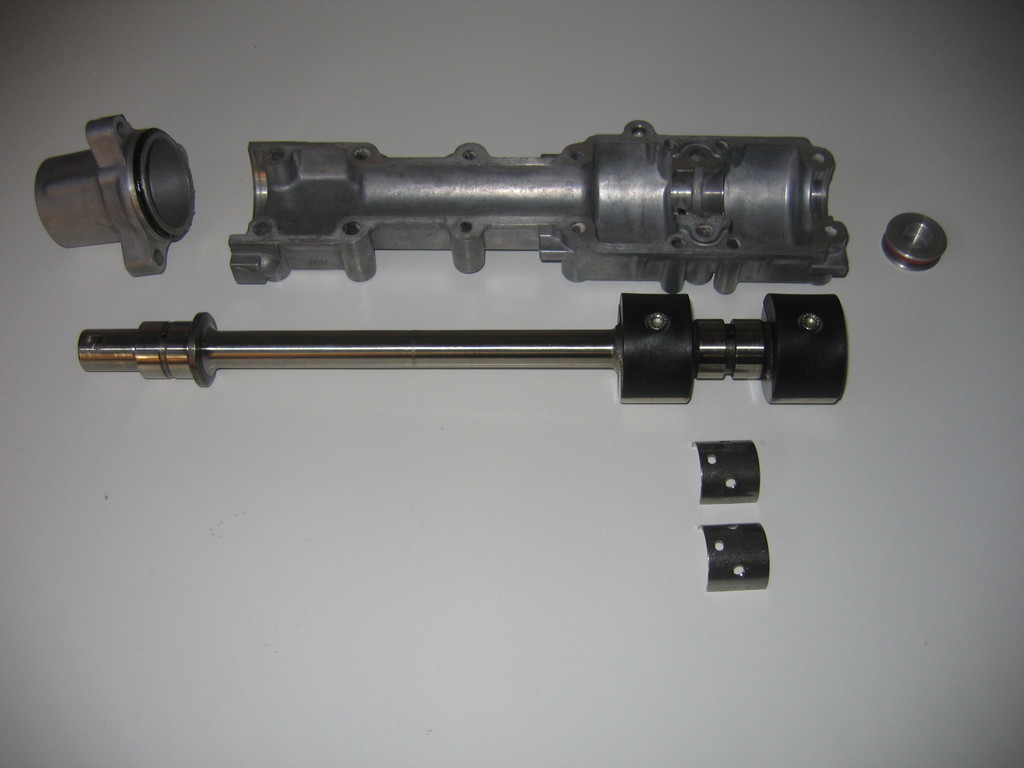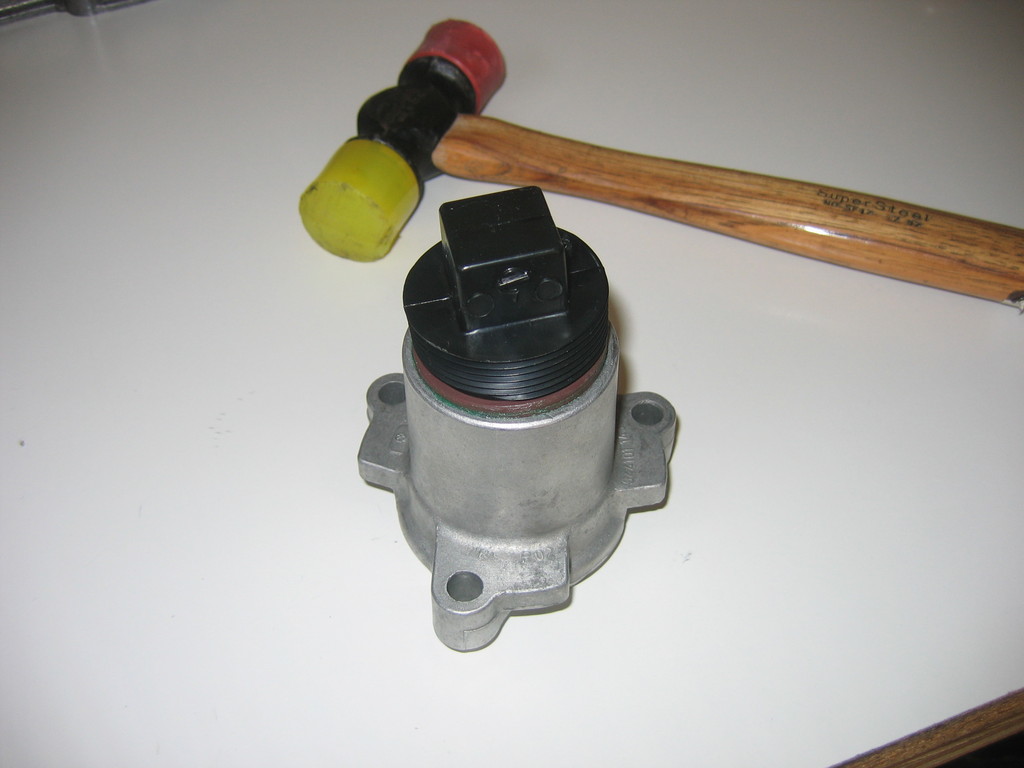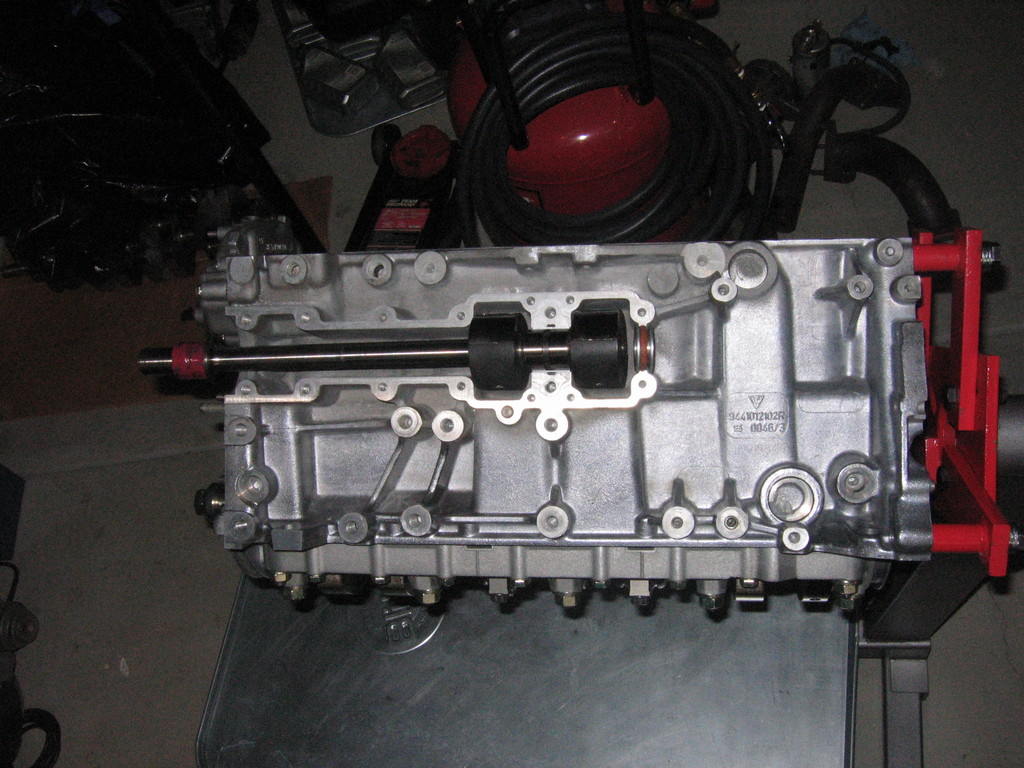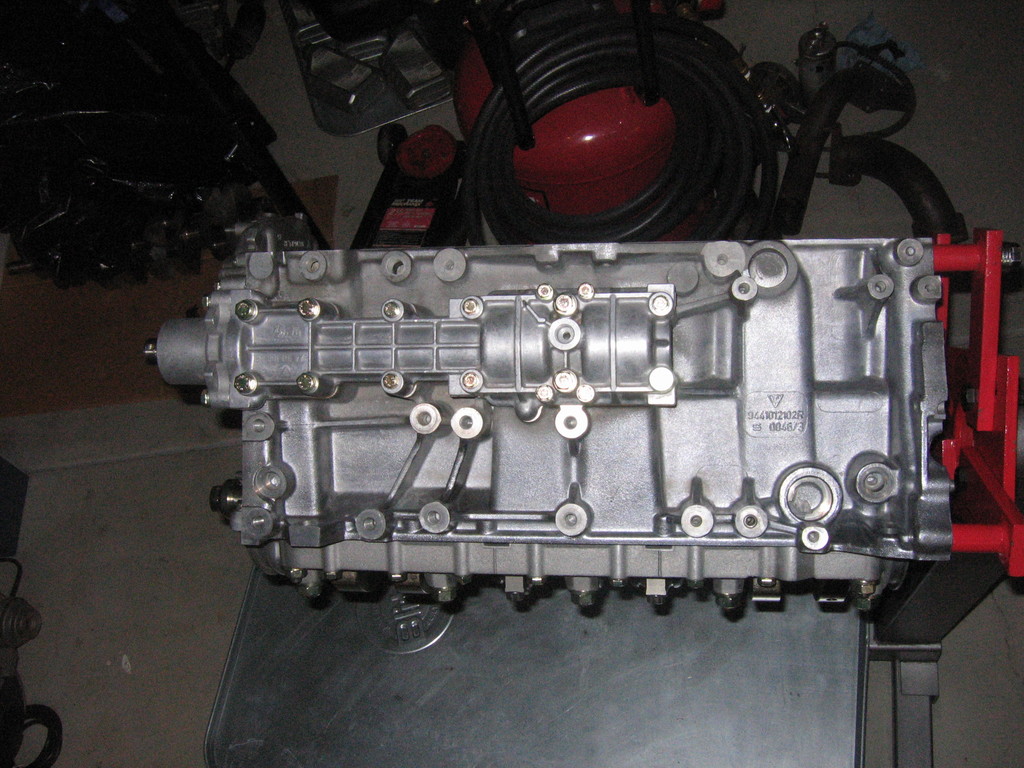For a 4 cylinder engine, the 944 engine is fairly large—2.5 liters, compared with 2 or less for many modern engines. At this size the weight of the reciprocating pistons and connecting rods create natural vibrations which shake the engine at frequencies that are multiples of the engine rotational speed. These vibrations occur in all 4 cylinder engines, but are more pronounced in larger engines due to the greater reciprocating mass.
To counter this, the 944 engine includes a pair of weighted shafts on either side of the engine. These shafts rotate in opposite directions, driven by a belt from the crankshaft. The weights are asymmetrical resulting in one side of the shaft being heavier than the other. The shafts are oriented such that, as they rotate, they counteract the natural vibrations produced by the motion of the pistons, resulting in smoother operation.
The shafts have bearings at the front and in the middle, and a seal that fits at the front. As with many things on this car, a little ingenuity is all that's required to avoid the costly Porsche-specific tools specified by the factory.
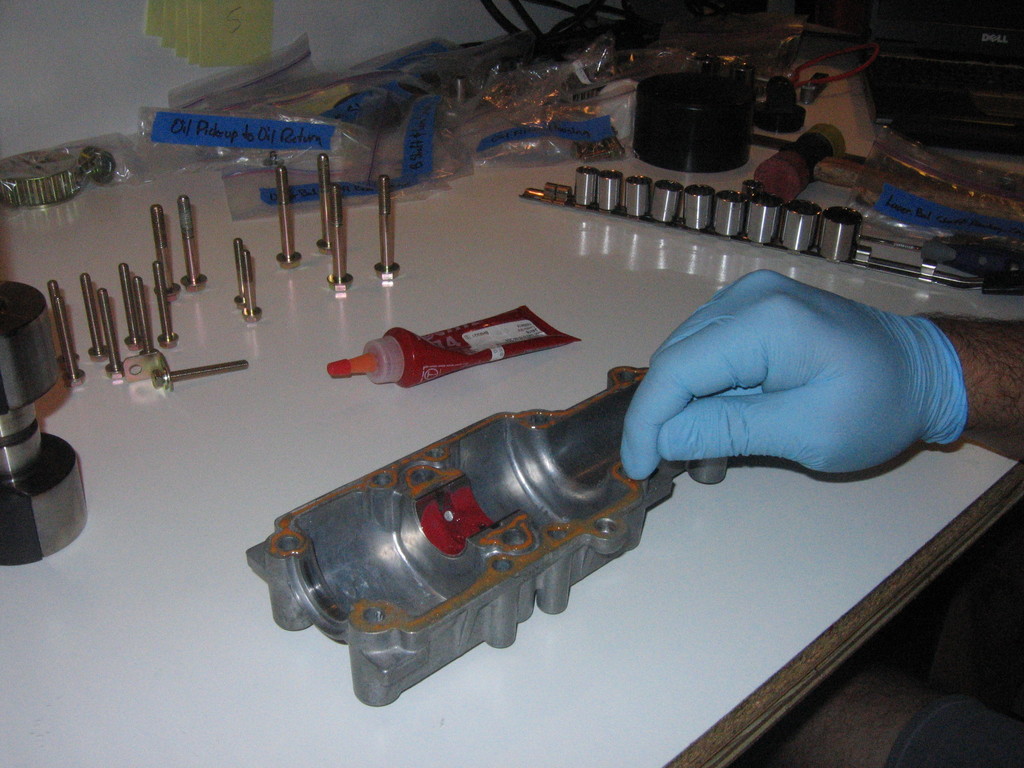
The balance shafts are housed in a recessed area on the side of the block, and covered with a metal cover. The block and the cover have matching semi-circular bearing holders into which a set of bearing shells are pressed (shown in the picture covered in red assembly lube). The metal covers are machined specifically for each block, which means if you by a used block like I did, you must get the covers along with it.
Sealing the perimeter of the covers is a very important step, as an oil leak here will be hard to correct once the engine is in the car. To make things more complicated there is also a circular plug with an o-ring that fits at the back of the housing. This is a notorious source of leaks as a car ages (which make you wonder why Porsche designed it this way).
Once everything is in place, the cover is bolted to the block with an array of M6 bolts.
